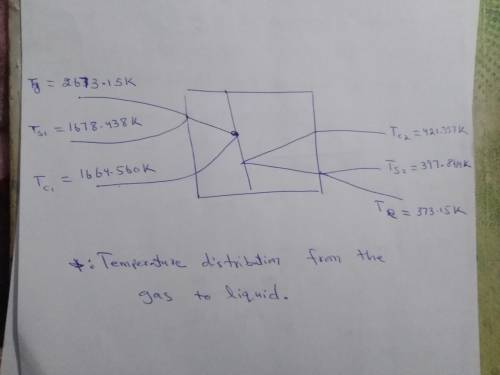
Physics, 15.02.2020 00:57 glowbaby123
A composite wall separates combustion gases at 2400°C from a liquid coolant at 100°C, with gas and liquid-side convection coefficients of 25 and 1000 W/m2 ⋅ K. The wall is composed of a 12-mm-thick layer of beryllium oxide on the gas side and a 24-mm-thick slab of stainless steel (AISI 304) on the liquid side. The contact resistance between the oxide and the steel is 0.05 m2 ⋅ K/W. What is the rate of heat loss per unit surface area of the composite? Sketch the temperature distribution from the gas to the liquid.

Answers: 1


Other questions on the subject: Physics


Physics, 23.06.2019 00:30, struckedblazing
What is the speed vfinal of the electron when it is 10.0 cm from charge 1?
Answers: 1

Physics, 23.06.2019 02:00, em387p3s1zr
Athird point charge q3 is now positioned halfway between q1 and q2. the net force on q2 now has a magnitude of f2,net = 5.861 n and points away from q1 and q3. what is the value (sign and magnitude) of the charge q3?
Answers: 2

Physics, 23.06.2019 03:00, kayla6653
Suppose the house in question 3 is located in cleveland where the annual average solar flux is 160 w/m2 . if 10 m2 of solar panels operating at 20 percent efficiency were installed on this house to collect and store solar energy in the form of hot water:
Answers: 2
You know the right answer?
A composite wall separates combustion gases at 2400°C from a liquid coolant at 100°C, with gas and l...
Questions in other subjects:

Spanish, 23.04.2021 01:00



Business, 23.04.2021 01:00




Mathematics, 23.04.2021 01:00

Social Studies, 23.04.2021 01:00

Mathematics, 23.04.2021 01:00


 ,
,  are temperatures of gasses and liquid in Kelvins,
are temperatures of gasses and liquid in Kelvins,  and
and  are thicknesses of gas layer and steel slab in meters,
are thicknesses of gas layer and steel slab in meters, ,
,  are convection coefficients gas and liquid in
are convection coefficients gas and liquid in  ,
,  is the contact resistance in
is the contact resistance in  ,and
,and  are thermal conductivities of gas and steel in
are thermal conductivities of gas and steel in  ,
, 









